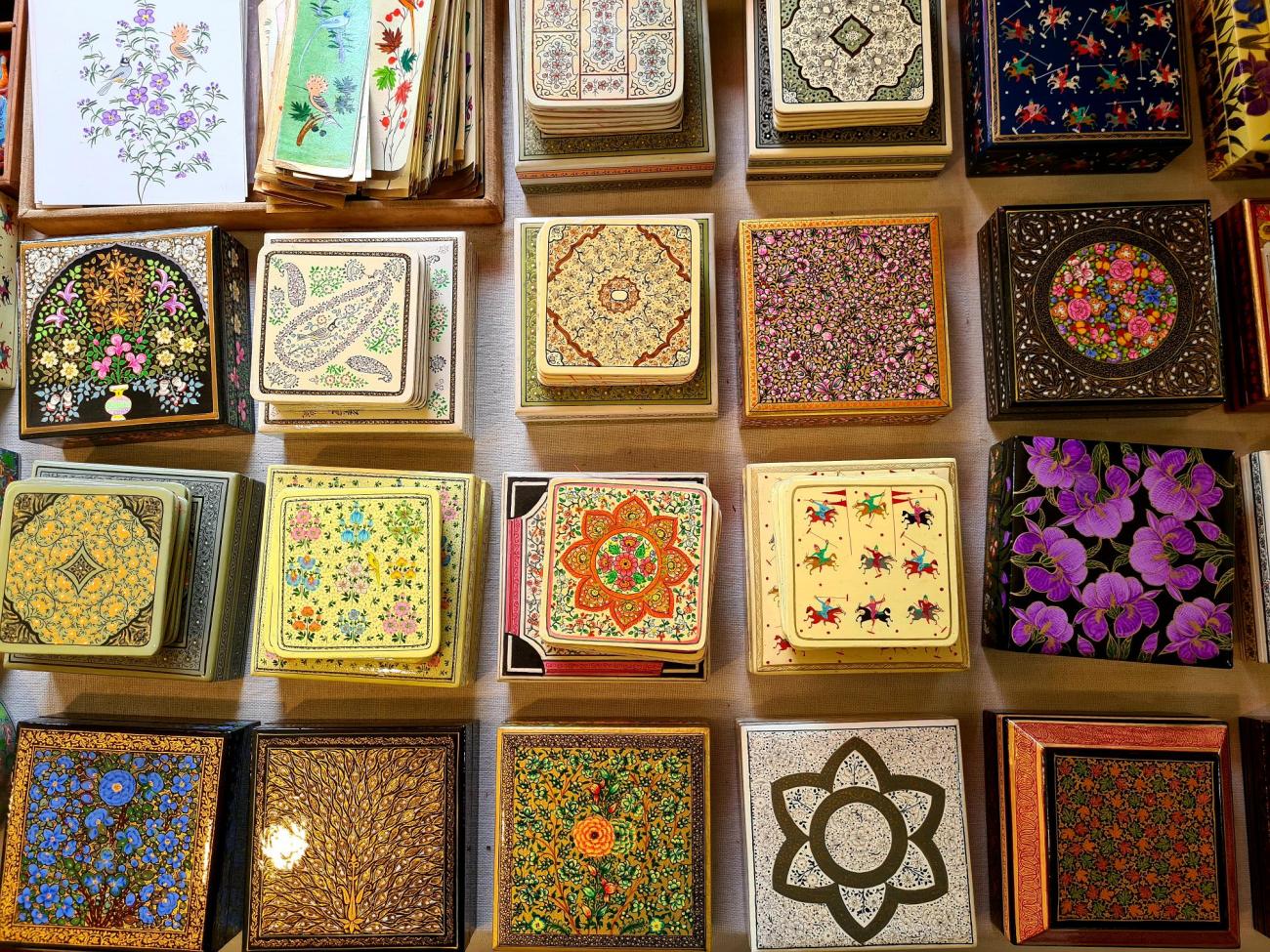
So, having dealt with my personal emotional issues of travelling to Kashmir, let me now explain some of the practicalities.
Getting here
Arriving at Srinagar airport was easy enough. As has always been the case, foreigners have to register which I did with a vacationing family from Iran. Having filled out a simple form, we were given a swab and plastic file and on leaving the terminal, were told to have a lateral flow test. This was conducted in a very rudimentary style by a man in PPE, poking the swab only a little way up my nose and onto my tongue, after which we were free to leave. I guess had any of us been positive we would have been called upon at our houseboat. No such visit occurred. I assume this test will be gone by the summer.
(NB – if travelling overland, either up from Jammu or down from Leh, I am told this test does not take place)
Where to stay

While there are a number of good hotels, most choose to stay on one of the traditional houseboats. During the days of the Raj, the British never ruled Kashmir and as such, despite loving the place as a summer refuge from the heat of the plains, they weren’t allowed to build homes here. Instead, they built houseboats the legacy of which continues to this day. There are over 2,000 houseboats dotted around Dal and Nagin Lakes, with curious names like Helen of Troy, Cheerful Charlie, Himalayan Queen and Appollo Eight. Some offer a better level of comfort than others. Sukoon is undoubtedly the most luxurious but there are other good ones as well, like the Royal Palace which our groups use. Some are huge with nine bedrooms, but there are others with just a single bedroom which are great for couples. If you don’t fancy a houseboat, the Taj and Lalit are the smartest hotel options or the Karan Mahal, which is a beautiful seven-room boutique property overlooking Dal Lake, where I am staying for my last night.
What to do while staying in Kashmir

First off, you’ll go on a shikara ride. Indeed, if staying on a houseboat you will have to do this merely to arrive at your lodgings. Similar to taking a gondola ride through Venice, taking a shikara ride out on the open lakes and through the back canals of the old town is a wonderful experience, relaxing as well as visually stimulating. At dawn one day you might like to take a shikara to see the floating vegetable market. You will probably want to see one or more of the famous Moghul gardens: Shalimar Barg, Nishat Barg, or my favourite at Peri Mahal – the Fairies Palace – Chashma Shahi. A walk through the old town is also fascinating. Here you can visit the three main mosques, the prettiest of which is Shah Hamdan with its spectacular interior, see the old houses made of miniature bricks and visit the spice bazaar. Further afield you can go for a walk in the hills, either at Gulmarg or Pahalgarm, camp for a night in a luxury camp near Sonamarg, or even go for a four-day trek.
Shopping

Kashmir is famous for its shopping. During the Moghul period in the 17th century, the vale became famous for its artisans and there are six different skills that hold an internationally recognised regional unique delineation. They are wood carving, tapestry, crewel embroidery, carpet making, papier mâché and pashmina production - which is where we get the word cashmere. Gemstones, particularly Kashmiri sapphires, can be found here, as can locally-made jewellery. There are many emporiums, the most famous of which is Suffering Moses, which has been selling all of the above-mentioned items to tourists since 1841! The best place to buy a pashmina or carpet, and to see the carpet makers at work, is Ali Shahs. But you can also do your shopping while relaxing on your shikara ride as many of the hawkers will paddle up to you.
Security

Everyone knows Kashmir is beautiful, but what most foreign travellers want to understand is, is it safe. And the answer as far as I am concerned is an unequivocal, yes! Over the last three decades, the security situation in the Vale has ebbed and flowed. There have been times when we have agreed with the British FCDO official advice against all but essential and suspended our trips here. But now, post-pandemic, I feel that advice is out of date. There are few police roadblocks, and those that are there, don’t stop you as they used to. There are few soldiers on the streets - one I saw yesterday was eating an ice cream. And there have been no attacks against tourists for decades. But the most compelling argument suggesting Kashmir is safe has to be seen in the numbers of Indian tourists visiting. There are now 35 flights a day coming in from various Indian cities, with over 100,000 visiting each month. If it were so dangerous as to warrant advising against travel, would so many people be risking it? Of course not.
I have had a wonderful couple of days here. Our first group tours for three years are scheduled for this summer, two of which are now guaranteed. If you have ever harboured the desire to visit Kashmir, now is your chance. It’s as beautiful as ever, and in my opinion totally safe.
